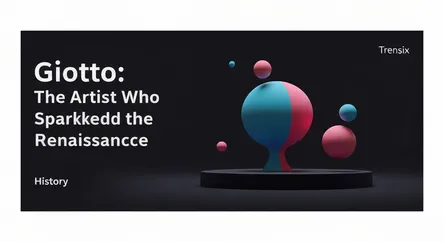History
Giotto: The Artist Who Sparked the Renaissance

Discover Giotto di Bondone, the revolutionary artist who broke from medieval traditions and paved the way for the Italian Renaissance.
What is it?
Giotto di Bondone (c. 1267-1337) was an Italian painter and architect from Florence, widely considered a pivotal figure in the history of Western art. He is often called the "father of European painting" for breaking away from the rigid, stylized traditions of Byzantine art. Giotto introduced groundbreaking techniques, creating figures with weight, volume, and a new sense of realism. His masterwork is the fresco cycle in the Scrovegni (or Arena) Chapel in Padua, completed around 1305, which depicts the lives of Christ and the Virgin Mary with unprecedented human emotion and narrative drama.
Why is it trending?
Giotto remains a key figure in art history because his work marks the transition from the medieval period to the Renaissance. His innovations in perspective, emotional expression, and naturalism laid the foundation for generations of artists, including Michelangelo and Raphael. Giotto's emphasis on humanism—portraying religious figures with relatable emotions and individuality—was revolutionary. This shift made art more accessible and engaging for the public. His influence was so profound that many historians believe it was unmatched until Michelangelo, nearly two centuries later.
How does it affect people?
Giotto fundamentally changed how people experienced art. By moving away from the flat, symbolic figures of the medieval era, he made religious stories more human and emotionally resonant. His characters displayed grief, joy, and contemplation, allowing viewers to connect with sacred narratives on a personal level. This new, naturalistic approach invited observers into the scene, transforming art from a purely devotional object into a powerful form of storytelling. This legacy endures, as his focus on realism and human emotion became a cornerstone of Western art.